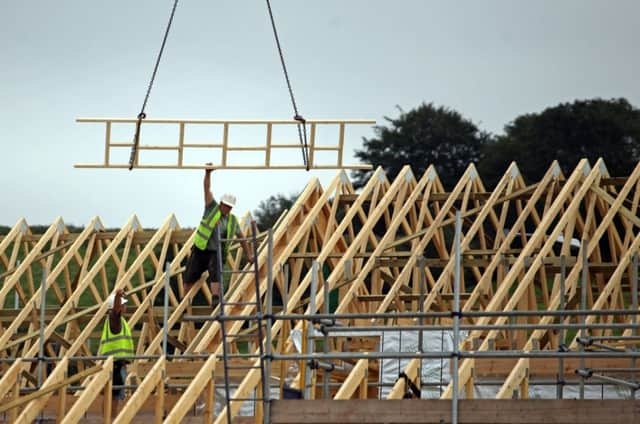Tesco in plans to build homes on land


The store plans to create 4,000 homes in the UK on landbanks purchased during a period of rapid expansion.
Britain’s biggest retailer last year revealed proposals to dramatically scale back new store openings following mounting pressure from discount retailers such as Aldi and Lidl, as customers moved away from hypermarket shopping.
Advertisement
Hide AdAdvertisement
Hide AdIn response to customer habits, Tesco will reduce the amount of new store space built each year, creating fewer large stores. Where there are no development plans, the company will sell sites, lease them or develop them for housing.
“We are currently working on plans for over 4,000 homes across the UK, either by building them ourselves or selling our sites to housing developers,” said a Tesco spokesman. “In places where we have already delivered housing schemes, the feedback from local communities and councils has been very positive.
“We are pleased to be bringing new investment to communities up and down the country and to be playing our part in meeting local housing needs over the coming years.”
Tesco’s move could help ease Britain’s chronic housing shortage, which is helping drive house price rises in some regions.
The initiative will also allow the firm to monetise some of its property assets. Britain’s average house price was £183,462 in June, according to data from mortgage lender Halifax.
The supermarket has previously been criticised for hoarding land and is estimated to own enough unused land to build 15,000 homes. An aggressive strategy of securing a large land bank for development helped the chain grow rapidly in the 1990s and early 2000s, but the recession, and the move to online retailing, has meant demand for giant superstores has waned.
Earlier this year, chief executive Philip Clark revealed a new plan for the supermarket chain, which will see it slow down its store opening programme, but look at diversifying by installing restaurants, coffee shops and bakeries in its existing branches.
He also spoke last year of a “multi-channel” approach, with a combination of large and local convenience stores – and online retailing.
Advertisement
Hide AdAdvertisement
Hide AdThe company has 3,400 stores in the UK, of which 247 are Tesco Extra hypermarkets and 482 are traditional Tesco supermarkets.
At the firm’s annual general meeting in June, Clark spoke of how the “undeniable development” of discounters, typified by Lidl and Aldi, had combined with the chronic downturn and online retailing to change the whole trading environment for Britain’s major supermarket groups.
A company statement said: “In response to changing customer shopping habits we have decided to reduce the amount of new store space we build each year, building fewer large stores.
“Where we no longer intend to develop sites, we sell them, lease them or develop them for housing.”
Last year, Tesco scrapped the Fresh & Easy brand launched on the west coast of America.
The brand has diversified beyond supermarkets, including the acquisition of Dobbies Garden Centres in 2010; a partnership with Black Circles – a car tyre firm with former Tesco boss Sir Terry Leahy among its shareholders – and family-friendly restaurant chain Giraffe, which it bought in 2013 for £50m.